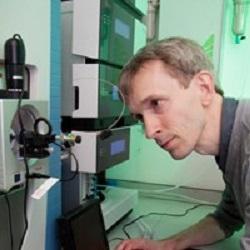CIMR proteomics facility
The CIMR Proteomics Facility (CIPF) was established to allow researchers access to cutting-edge proteomics technologies. The facility focuses on peptide analysis by LC–MSMS and we have a number of instruments capable of supporting a variety of different experiments. We routinely perform work ranging from SDS-PAGE band analysis to quantitative proteomics but we would encourage researchers to contact us about any projects they are considering and we are happy to discuss collaborating on the application or development of new methods.
We also work with researchers from across the University of Cambridge, other Universities and companies. Please contact Dr Robin Antrobus for more information.
CIPF is overseen by a steering committee comprising researchers from CIMR and IMS. Members of the committee include Robin Antrobus, David Rubinsztein, David Cheesman, Margaret Robinson and Mike Weekes (Chair).
The CIPF is situated on level 5 of CIMR.
Log in to internal site
Instruments
CIPF has three Orbitrap mass spectrometers with nanoflow ultra-high pressure LCs configured for peptide and protein analysis. They have been optimised for certain applications but we will endeavour to accommodate most requests wherever possible.
Thermo Orbitrap Fusion Lumos with ETD and Dionex RSLC 3000 nano UPLC. The unique geometry of this instrument means it can generate data from TMT labelled samples without suffering ratio compression. The high sensitivity and range of fragmentation methods, including ETD, make it ideal for PTM analysis.
Thermo Orbitrap Q Exactive Plus with EASY-spray source and Dionex RSLC 3000 nano UPLC. This instrument is used for medium to high complexity peptide samples, but because the instrument is equipped with protein and high resolution mode it can be used for analysing intact proteins.
Thermo Orbitrap Q Exactive with EASY-spray source and Dionex RSLC 3000 nano UPLC. This instrument is used to identify proteins in low to medium complexity samples. The EASY-spray source accommodates a range of columns up to 50cm in length which support long gradients without an appreciable loss in chromatographic resolution
Off-line Dionex RS 3000 UHPLC. This is used to pre-fractionate complex samples and is currently configured to run high-pH reverse phase.
Some recent papers:
Mannose binding lectin is hydroxylated by collagen prolyl-4-hydroxylase and can be inhibited through an off-target effect of PHD inhibitors. Bhute VJ, Harte J, Houghton JW, Maxwell PH. Kidney360. Apr 2020. Doi: 10.34067/KID.0000092020
Comprehensive cell surface proteomics defines markers of classical, intermediate and non-classical monocytes. Ravenhill BJ, Soday L, Houghton JW, Antrobus R, Weekes MP. Sci Rep. 2020 Mar 12;10(1):4560. doi: 10.1038/s41598-020-61356-w. PMID:32165698
Auxiliary-assisted chemical ubiquitylation of NEMO and linear extension by HOIP. Burlina F, Abdel-Aal AM, Raz R, Pinzuti I, Papageorgiou G, Li J, Antrobus R, Martin SR, Kunzelmann S, Stieglitz B, Offer J. Commun Chem. 2019 Sep 19;2:111. doi: 10.1038/s42004-019-0211-7. PMID:31942456
Human cytomegalovirus interactome analysis identifies degradation hubs, domain associations and viral protein functions. Nobre LV, Nightingale K, Ravenhill BJ, Antrobus R, Soday L, Nichols J, Davies JA, Seirafian S, Wang EC, Davison AJ, Wilkinson GW, Stanton RJ, Huttlin EL, Weekes MP. Elife. 2019 Dec 24;8. pii: e49894. doi: 10.7554/eLife.49894. PMID:31873071
Quantitative comparative analysis of human erythrocyte surface proteins between individuals from two genetically distinct populations. Ravenhill BJ, Kanjee U, Ahouidi A, Nobre L, Williamson J, Goldberg JM, Antrobus R, Dieye T, Duraisingh MT, Weekes MP. Commun Biol. 2019 Sep 20;2:350. doi: 10.1038/s42003-019-0596-y. eCollection 2019. PMID:31552303
Temporal Proteomic Analysis of BK Polyomavirus Infection Reveals Virus-Induced G2 Arrest and Highly Effective Evasion of Innate Immune Sensing. Caller LG, Davies CTR, Antrobus R, Lehner PJ, Weekes MP, Crump CM. J Virol. 2019 Jul 30;93(16). pii: e00595-19. doi: 10.1128/JVI.00595-19. Print 2019 Aug 15. PMID:31142673
Quantitative Temporal Proteomic Analysis of Vaccinia Virus Infection Reveals Regulation of Histone Deacetylases by an Interferon Antagonist. Soday L, Lu Y, Albarnaz JD, Davies CTR, Antrobus R, Smith GL, Weekes MP. Cell Rep. 2019 May 7;27(6):1920-1933.e7. doi: 10.1016/j.celrep.2019.04.042. PMID:31067474


